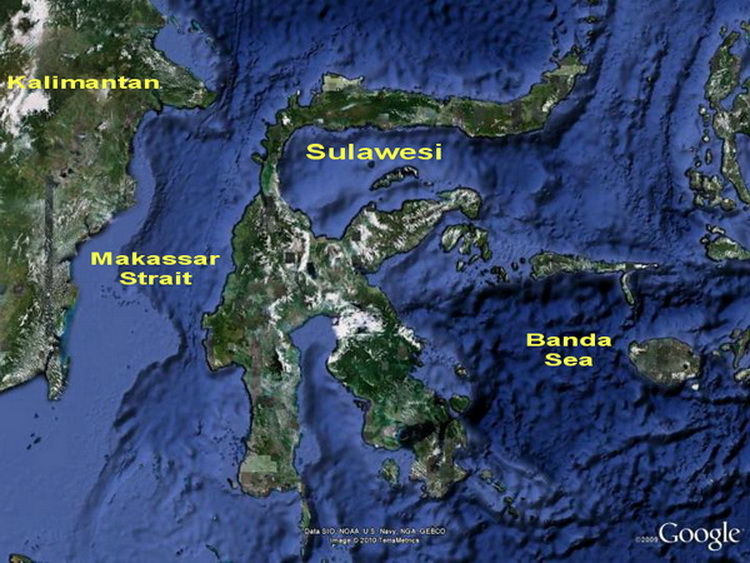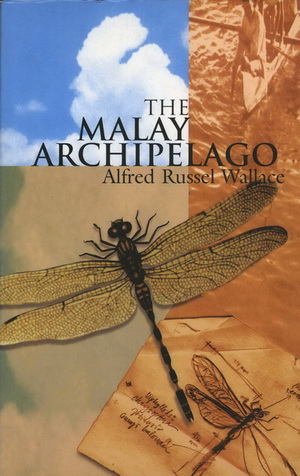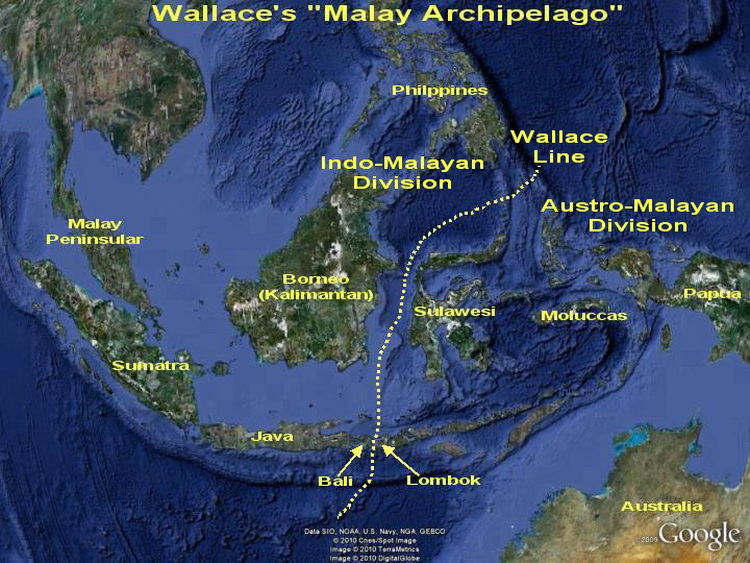The island of Sulawesi lies like a large broken star in the middle of the vast archipelago that now forms the country of Indonesia. It is the third largest of the 17,110 islands that make up Indonesia and certainly one of it’s most interesting as it offers a combination of excellent diving and a great selection of things to see & do above the water.
Sulawesi’s population is around 15m people with the majority of about 80% being Muslim and mainly concentrated in the south, with the Makassarese and the famous sea-going Bugis as the most strongly Islamic. In central Sulawesi are the animist Christian Toraja and the Christian Minihasa in the north.

Map of Sulawesi
The Portugese were the first Europeans to reach what was then called the East Indies in the early 16th century, as they searched for the source of the lucrative Spice Trade, which they found in the Moluccas – the 1000+ islands at the eastern end of the archipelago. Some five years later they expanded their influence to what is now called Sulawesi, which they named as Ponto dos Celebres (Cape of the Infamous ones) a reflection of the strong currents they experienced on route and which caused a large number of shipwrecks.
Celebres morphed in to Celebes over time and we now know the infamy they refer to would have been the Indonesian Throughflow and it’s eddies, which must have been quite an experience for them in their small caravel ships.
Diving Indonesia: North Sulawesi – The Wallace Line

Alfred Russell Wallace was the 19th century British naturalist who spent who spent the 8 years from 1854 to 1862 exploring and classifying both the flora & fauna and the people of what he called the Malay Archipelago.
The results of which he subsequently documented in a book of the same title that was first published in 1869.
The Malay Archipelago is still in print to this day and provides a remarkable insight into the man himself and the areas he explored in more than 60 separate journeys, covering over 14,000 miles and collecting a total of 125,660 specimens of natural history – much of which he bequeathed to British Museums.
The time spent and the distance traveled, combined with the vast specimen collection, lead Wallace to a very clear conclusion…
Just as the island of Madagascar had “distinct & peculiar” species because of the 300 mile deep water channel that separates it from Africa, and Corsica & Sardinia had different species to Italy for similar reasons, there were striking differences between the flora & fauna in the eastern & western parts of the archipelago.
Wallace postulated that an imaginary line could be drawn roughly north to south through the Malay Archipelago and to the west of that line the flora & fauna clearly belonged to what he called Indo-Malayan division, while everything to the east belonged to the Austro-Malayan division.
This also “lead irrestively to the conclusion” that the land masses to the west had at one point been part of the continent of Asia, while those to the east were once part of a much larger Australian continent.
That imaginary line became known as the Wallace Line and is often referred to as the most profound zoological barrier on the plant.

The “Malay Archipelago” and the Wallace Line
Diving Indonesia: North Sulawesi – The Wallace Line & Sulawesi
Wallace noted that the greatest contrasts between the western & eastern divisions of the Malay Archipelago were between the islands of Borneo & Sulawesi in the north and Bali & Lombok in the south.
We now know that it is the Indonesian Throughflow as it flows through the Indonesian archipelago that created the physical barrier that prevented the migration of flora & fauna between the Indo-Malayan and Austro-Malayan divisions.
It is also responsible for creating the incredible biodiversity to be found underwater in both those areas and is the basic reason why the scuba diving is so good!
Diving Indonesia: North Sulawesi – Getting there…

There are two main airports in Sulawesi – Manado in the north and Makassar, or Ujang Pandang as it is sometimes referred to, in the south.
The town of Manado was completely rebuilt by the Dutch in 1844 after it was virtually destroyed by earthquakes, and when Alfred Wallace visited it in 1959 he described the little town as “one of the prettiest is the East”, saying that it reminded him of a large garden containing rows of rustic villas.
But time has marched on and, while Manado is well served with most amenities, the word pretty does not come to mind when you are there.
It does have one very significant thing though – a new airport that has an international terminal. This obviously means you can fly directly there, rather than having to go through the two main international “hubs” in Indonesia – Jakarta & Bali.
The principal international carrier into Manado is Silk Air, which currently operates four return flights per week from Singapore.
Air Asia was also operating flights from Kuala Lumpur, but these appear to have been suspended when I checked their schedules.
Makassar is well served by the Indonesian domestic airlines from both Jakarta and Bali, and has onward flights to Manado.
Next Page: Diving North Sulawesi
